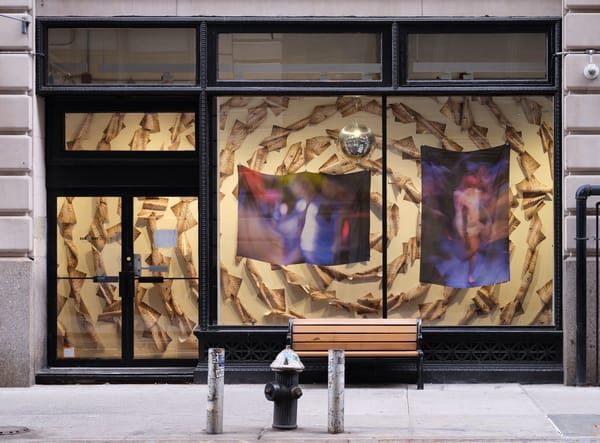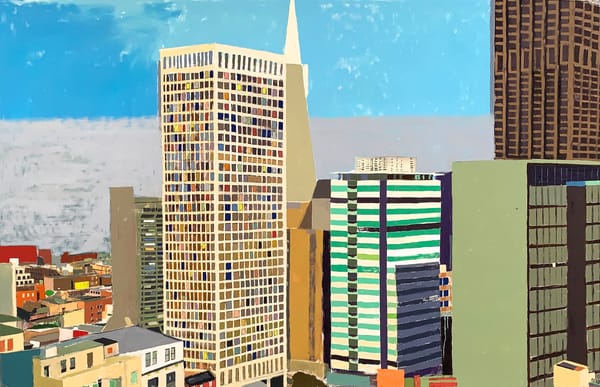Phoebe Helander Paints Objects in Time
Helander removes her art from the frozen time in which still life paintings exist and reminds us that the moment recreated has already come and gone.
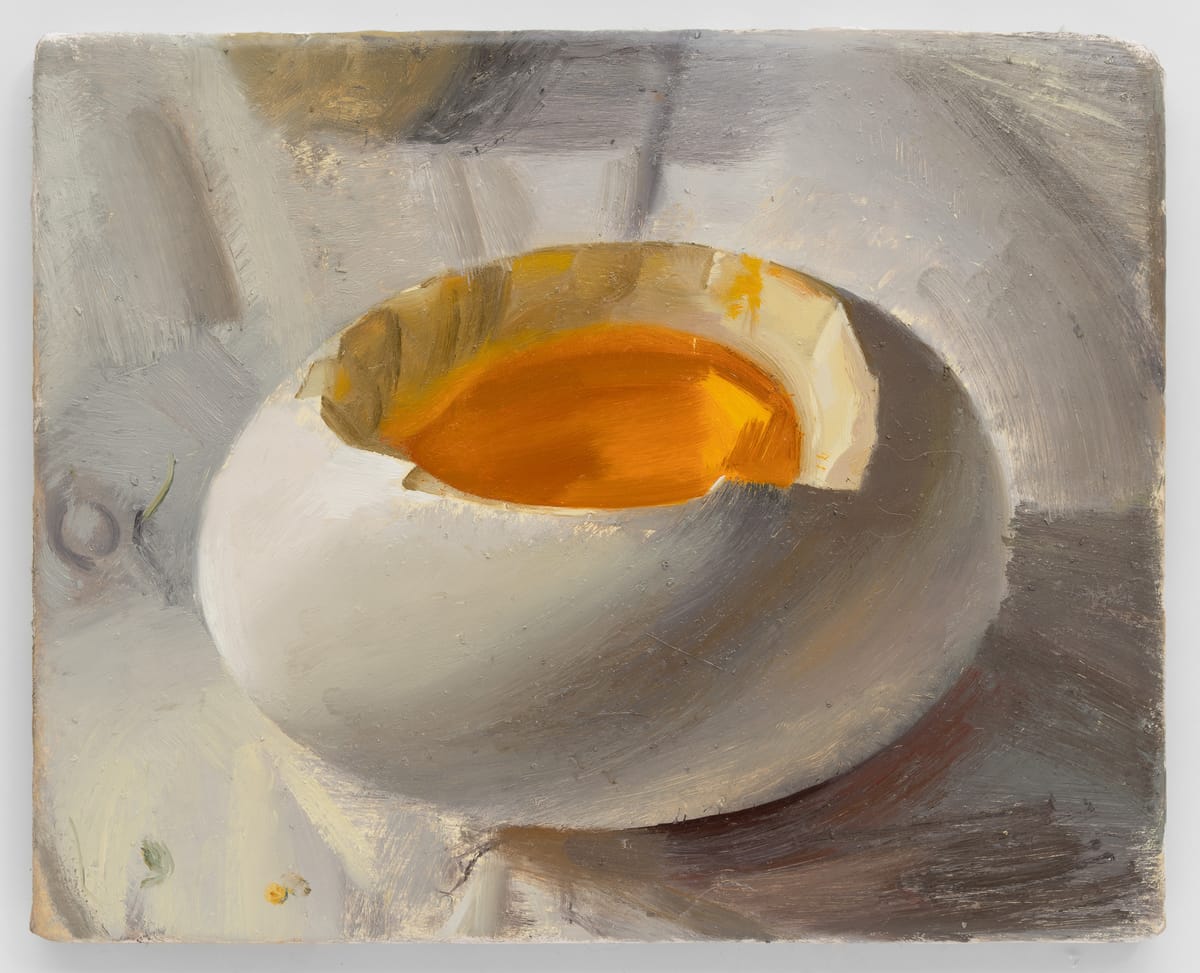
HUDSON, New York — I did not expect the exhibition Phoebe Helander: In Plain Sight at Pamela Salisbury Gallery to win me over, given its traditional subject matter, but it did. Helander paints still lifes in oil on wood supports that measure around 14 by 11 inches. Could these be anything more than beautiful paintings of objects? How could the artist convince viewers to stay with the work and reflect upon what they see? What caught my attention was her devotion to the envisioning the subject matter in time, including two paintings of a candle seen from above and view of a glass with a chipped rim.
More than two dozen works fill the gallery’s first floor and basement spaces, all painted between 2022 and 2024. In “Ranunculus II" (2024), we are looking down at the pale, buttery, tightly packed petals of a flower sitting snugly in a water glass. The silvery grays off to the right and the soft light coming in from the left imbue the image with subdued warmth. After finishing the painting, for whatever reason, Helander abraded the surfacing, causing it to become distressed.
With this disruptive action, she equates the flower with the painting — she can protect neither one from time’s indifferent passage. This awareness removes her art from the frozen time in which still life paintings exist and reminds us that the moment recreated has already come and gone.
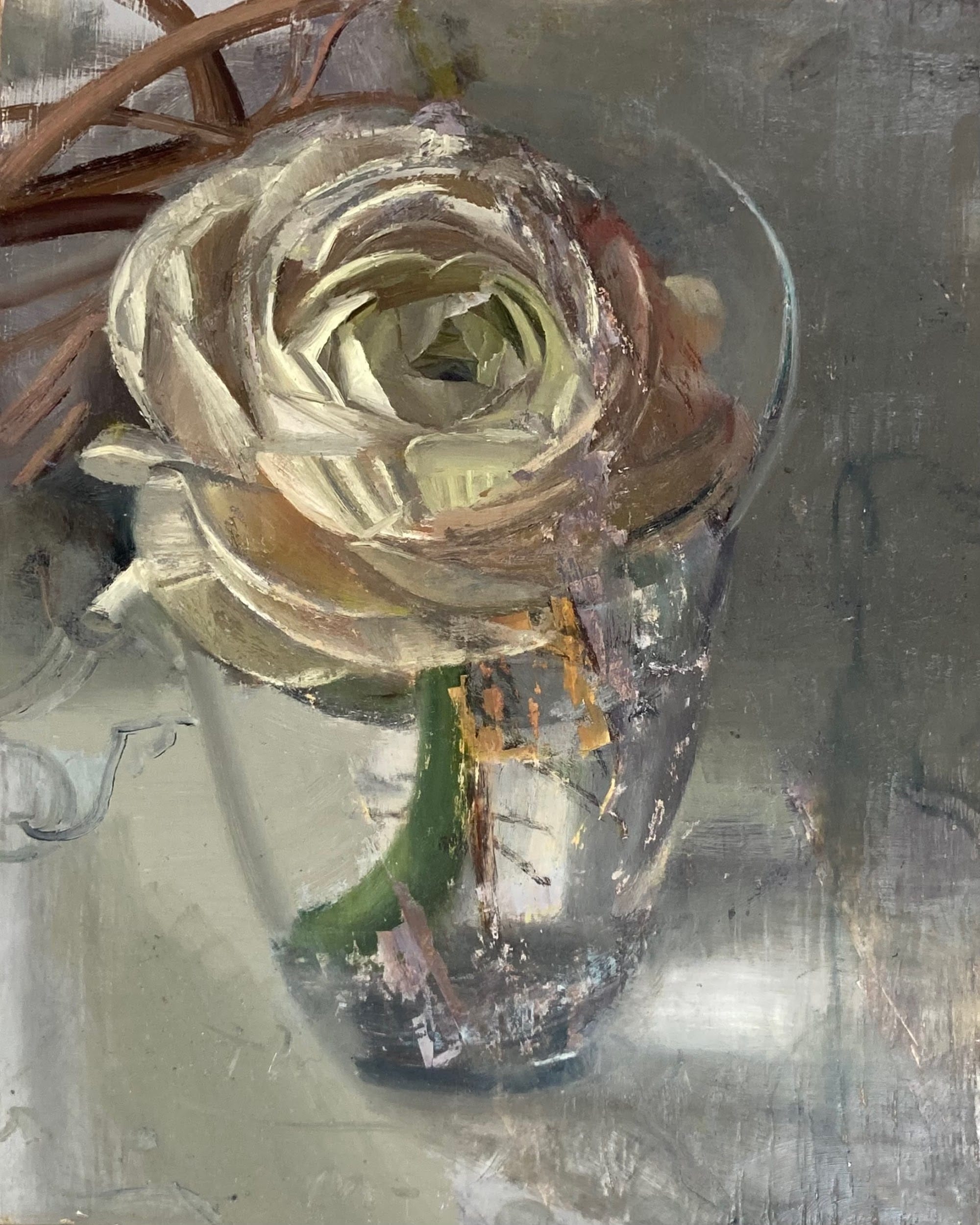
In “Candle Burning” (2023), the fiery wick has eaten its way down the waxy yellow-orange column so that a collapsing wax wall encircles the flame. A single line of melting wax runs down the front side of the candle. The equation between a brushstroke and the malleable, impermanent drip of wax adds an emotional tenor to the piece. Dissipation is unavoidable, even as the painter attempts to both halt and shape time with each work of art. Helander returns to this subject in “Candle Burning II” (2024), as if to note that the same subject is always changing; destruction is unavoidable.
In "Coffee V” (2024), a close-up view of a cup filled to brim with black coffee suggests the drinker is about to have their first taste. Grit and hair from the paintbrush are visible on the surface of the coffee. That refusal to make a flawless surface distinguishes Helander’s paintings from the generation of painterly realists that rose to prominence in New York in the 1960s and ’70s, and connects with the women artists who committed themselves to observational painting in which time passing was a central feature: Lois Dodd, Catherine Murphy, Sylvia Plimack Mangold, and, more recently, Josephine Halvorson. At the same time, Helander is defining a territory all her own as a work like “Coffee V” comments not only on the ephemerality of life but on the cycle of consumption and waste in which we’re caught.
The painting that most spoke to me was the simplest, most pared down work in the exhibition. The background of “Glass” (2023), behind a minimally rendered glass with a chipped rim, is split in two by a dividing line distorted by the curve of the glass. An off-white ground takes up the lower part of the picture plane while brownish-mauve fills the upper part. The chipped rim and the austerity of the composition held my attention. By memorializing a no-frills water glass whose distinguishing feature is a flaw, Helander embraces vulnerability. I think there is something brave about doing that now, in a world where the facade of flawlessness dominates both art and other cultural forms. Helander gives us more than a painting to look at; she gives us something to meditate upon as we live our daily lives.


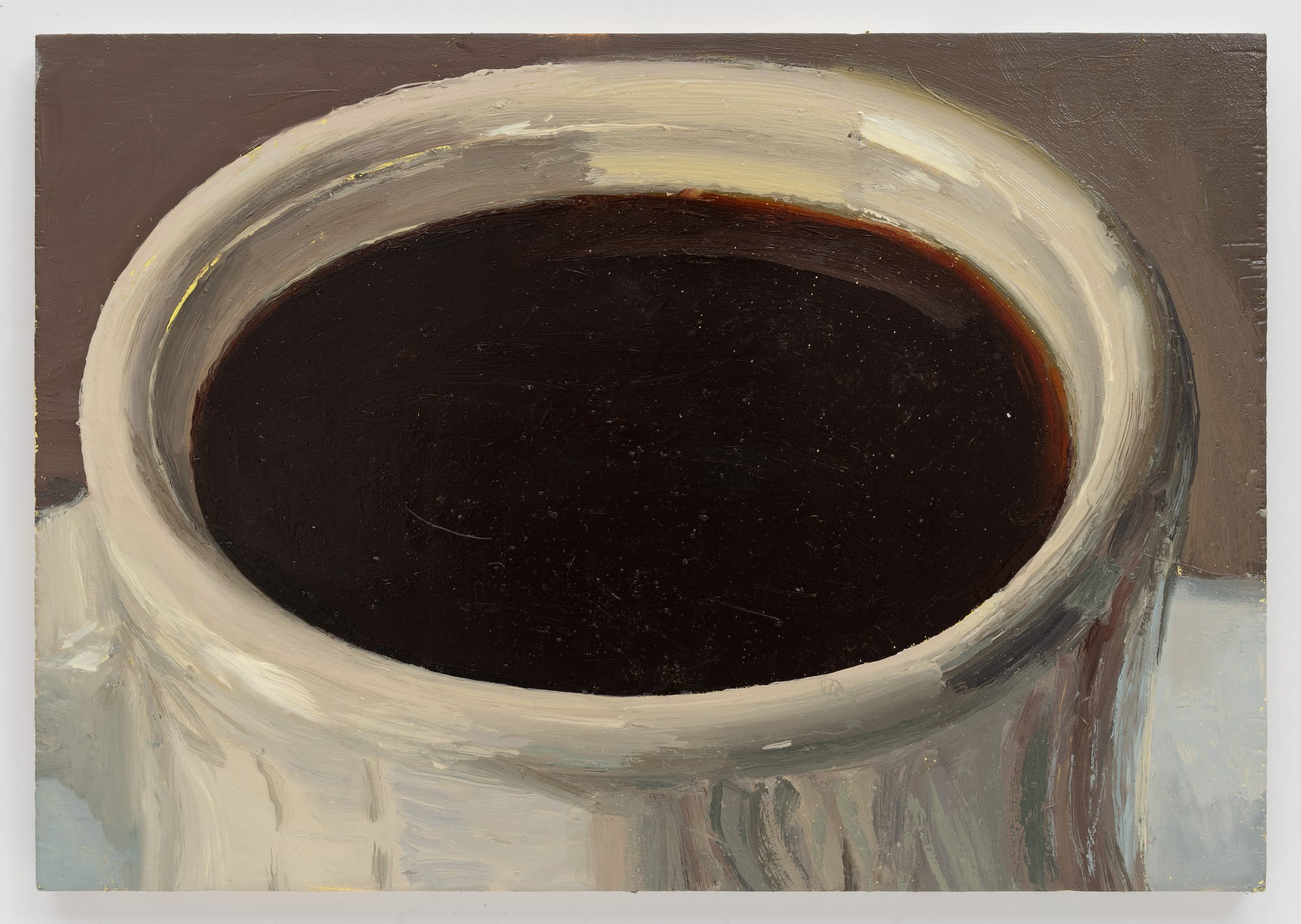
Phoebe Helander: In Plain Sight continues at Pamela Salisbury Gallery (362 1/2 Warren Street, Hudson, New York) through June 16. The exhibition was organized by the gallery.

